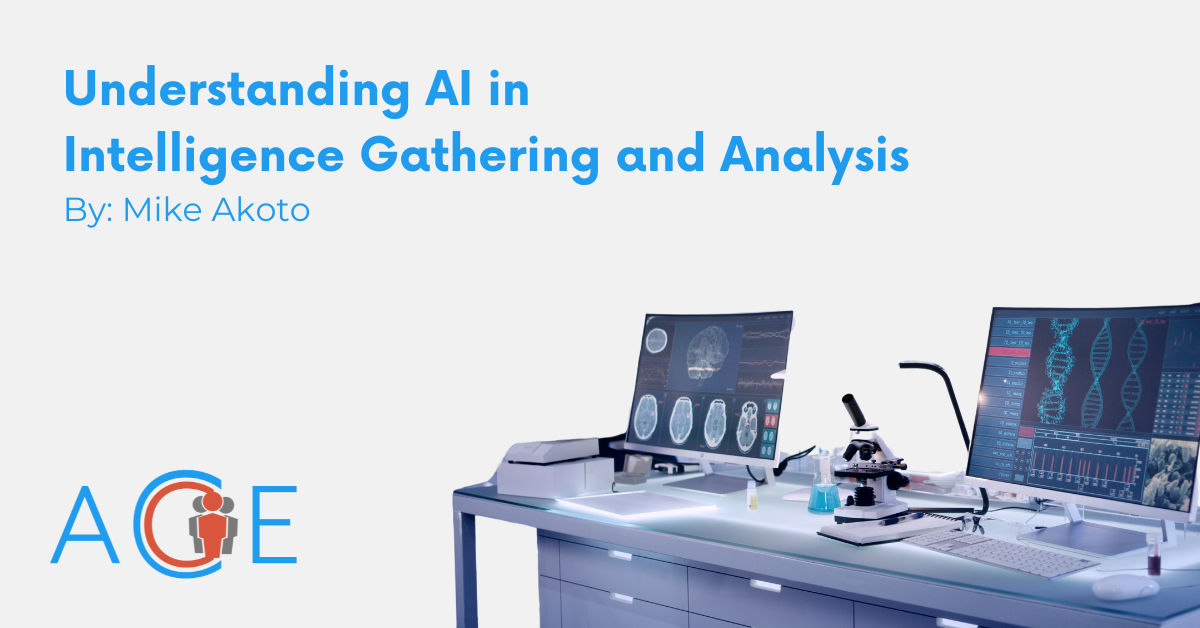What is AI?
Artificial Intelligence (AI) involves the use of machine learning algorithms and predictive models to process and analyze large datasets. Intelligence gathering, a critical component of national security and defense systems, refers to the collection and analysis of information to identify potential threats. Recently, AI has taken on a bigger role in U.S. intelligence systems, automating data collection and analysis processes that used to be completed manually. While some see this as a step towards more efficient and effective defense systems, others point to the potential for human rights violations and security breaches.
The Rise of AI in National Defense
The strategic competition between the United States and China has elevated AI as a critical factor in national security and defense intelligence capabilities. Both nations are heavily investing in AI, aiming to outpace each other in developing technologies that could offer a decisive advantage in intelligence gathering. At the same time, AI’s role in geospatial intelligence is particularly evident in the ongoing Russo-Ukrainian conflict. AI has become an essential asset for analyzing data from various sensors, systems, and personnel in the field. It gathers data from combat scenarios in real-time and provides actionable intelligence to military operators.
The Case for AI in Intelligence Operations
Proponents of AI’s increasing role in intelligence and defense cite two key reasons for their support:
- Enhanced Data Analysis: Proponents of AI in intelligence gathering highlight AI’s ability to process vast amounts of data quickly and with precision. For example, Scylla AI software, designed for security and defense applications, demonstrated threat detection accuracy exceeding 96% and significantly reduced false alarm rates when tested by the U.S Department of Defense. By integrating computer vision and machine learning algorithms, Scylla improved response times in critical defense and security environments. Additionally, supporters cite projects like the U.S. Defense Intelligence Agency’s SABLE SPEAR which successfully employed AI to identify illicit activities that traditional methods overlooked.
- Complementary Capabilities: Supporters contend that by automating repetitive tasks and providing recommendations based on historical data, AI not only reduces human error, but can serve to complement human decision-making. They argue that AI systems are not completely replacing military operators’ autonomy to make decisions, but rather serving as a partner in decision making that can increase accuracy and decrease collateral damage in military operations.
Criticisms of AI in Intelligence Operations
AI’s growing role in intelligence and defense has drawn criticism for three main reasons:
- The “Black Box” Problem: Critics argue that AI’s lack of transparency in decision-making, often referred to as the “black box effect,” presents a significant challenge. AI systems may behave unpredictably, especially when trained on biased data. Since it is very difficult for operators to discern how and why AI systems reach certain decisions, it is difficult to redirect AI systems after making decisions that are harmful.
- Human Rights Consequences: Opponents say the “Black Box” problem can lead to errors in critical applications, rendering AI-driven decisions dangerous in combat. A notable example is the U.S. military’s AI-driven drone strike in Kabul on August 29, 2021. The AI system incorrectly identified a civilian vehicle as a threat, resulting in a tragic strike that killed 10 civilians, including 7 children. AI’s reliance on input data quality means that biased or flawed data can produce inaccurate and potentially deadly conclusions. In the context of military operations, these flaws could lead to increased civilian casualties or misidentification of combatants, violating international norms like the Geneva Convention.
- Security Vulnerabilities: Centralized data analysis systems also increase the risk of cyberattacks. Critics point out that advanced AI systems could be exploited by malicious actors, raising concerns over the security of sensitive information used in intelligence operations.
- Infrastructure and Cultural Resistance: Finally, critics hold that integrating AI into government systems requires significant resources and organizational overhaul. Transitioning to AI-based intelligence systems requires updates to infrastructure and organizational culture, and may result in layoffs of employees. The U.S. Department of Defense has faced difficulties in standardizing and integrating its vast array of data sources, hindering AI deployment across military branches. Additionally, resistance from personnel concerned about job displacement and AI’s role in decision-making has slowed the integration process.
Weighing the Benefits and Risks
The integration of AI into intelligence operations offers the potential for increased efficiency, enhanced data analysis, and improved threat detection. However, it also introduces serious concerns about data security, job security, and the human rights risks of unpredictable combat outcomes. Moving forward, the intelligence community will have to weigh these perks and drawbacks as it continues its push towards AI integration.


